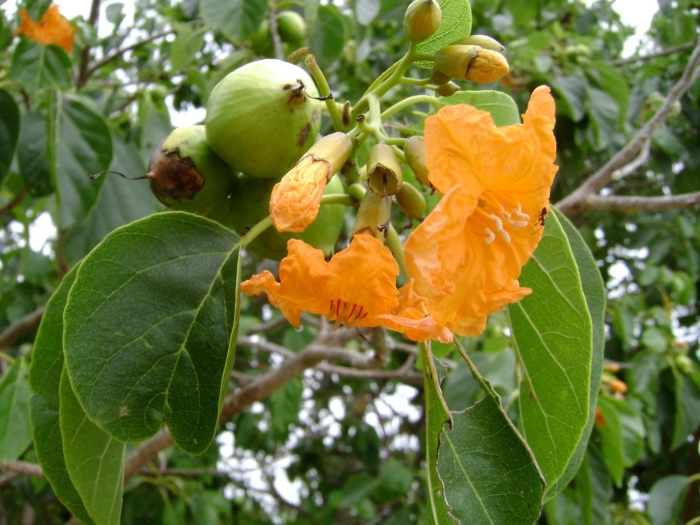Beach Cordia
(Cordia subcordata)
Beach Cordia (Cordia subcordata)
/
/

Tauʻolunga
CC BY-SA 3.0
Image By:
Tauʻolunga
Recorded By:
Copyright:
CC BY-SA 3.0
Copyright Notice:
Photo by: Tauʻolunga | License Type: CC BY-SA 3.0 | License URL: http://creativecommons.org/licenses/by-sa/3.0/ | Uploader: Tauʻolunga | Publisher: Wikimedia Commons | Title: Cordia_subcordata,_seeds,_flower,_leaves.jpg | Notes: {{Information |Description=foliage and fruiting panicle of ''Cordyline obtecta'', Auckland, New Zealand |Source=self-made |Date=18 July 2007 |Author= [[User:Kahuroa|Kahuroa]] }} [[Category:Files by User:Kahuroa]] {{PD-user|Kahuroa}} |











































Estimated Native Range
Summary
Cordia subcordata, commonly known as Beach Cordia, is an evergreen flowering tree native to coastal forests, sandy shores, and mangrove edges in the Indo-Pacific region, including East Africa, South Asia, Southeast Asia, Northern Australia, and the Pacific Islands. It typically grows to 7–10 m (23–33 ft) in height but can reach up to 15 m (49 ft). The tree has a spreading crown with ovate, leathery leaves that are 8–20 cm (3.1–7.9 in) long and 5–13 cm (2.0–5.1 in) wide. The showy tubular flowers, 2.5–4 cm (0.98–1.57 in) in diameter, are borne in cymes or panicles. Petals are a striking orange, while the sepals are pale green. Flowering occurs throughout the year, with a peak in spring, attracting various pollinators.
Beach Cordia is valued for its ornamental flowers, drought tolerance, and adaptability to coastal conditions, making it suitable for seaside landscaping, urban planting, and as a shade tree in tropical and subtropical regions. It requires full sun exposure and thrives in well-drained sandy or loamy soils with low to moderate water requirements. The species is relatively low-maintenance and resistant to pests and diseases. However, it is sensitive to frost and should not be planted in areas with cold winter climates. Beach Cordia’s wood is also used for carving and in traditional medicine.CC BY-SA 4.0
Beach Cordia is valued for its ornamental flowers, drought tolerance, and adaptability to coastal conditions, making it suitable for seaside landscaping, urban planting, and as a shade tree in tropical and subtropical regions. It requires full sun exposure and thrives in well-drained sandy or loamy soils with low to moderate water requirements. The species is relatively low-maintenance and resistant to pests and diseases. However, it is sensitive to frost and should not be planted in areas with cold winter climates. Beach Cordia’s wood is also used for carving and in traditional medicine.CC BY-SA 4.0
Plant Description
- Plant Type: Tree
- Height: 23-33 feet
- Width: 15-25 feet
- Growth Rate: Rapid
- Flower Color: Orange
- Flowering Season: Summer
- Leaf Retention: Evergreen
Growth Requirements
- Sun: Full Sun
- Water: Low
- Drainage: Medium, Fast
Common Uses
Bee Garden, Bird Garden, Butterfly Garden, Hummingbird Garden, Low Maintenance, Showy Flowers
Natural Habitat
Coastal forests, sandy shores, and mangrove edges in the Indo-Pacific region
Other Names
Common Names: Kou, Mareer, Marer, Kerosene Wood, Island-Walnut, Beach Cordial, Sea Trumpet, Faux-Ébène, Noyer D’Océanie
Scientific Names: , Cordia subcordata, Cordia hexandra, Cordia orientalis, Cordia banalo, Cordia campanulata, Cordia ignota, Cordia marchionica, Cordia moluccana, Cordia rumphii
GBIF Accepted Name: Cordia subcordata Lam.